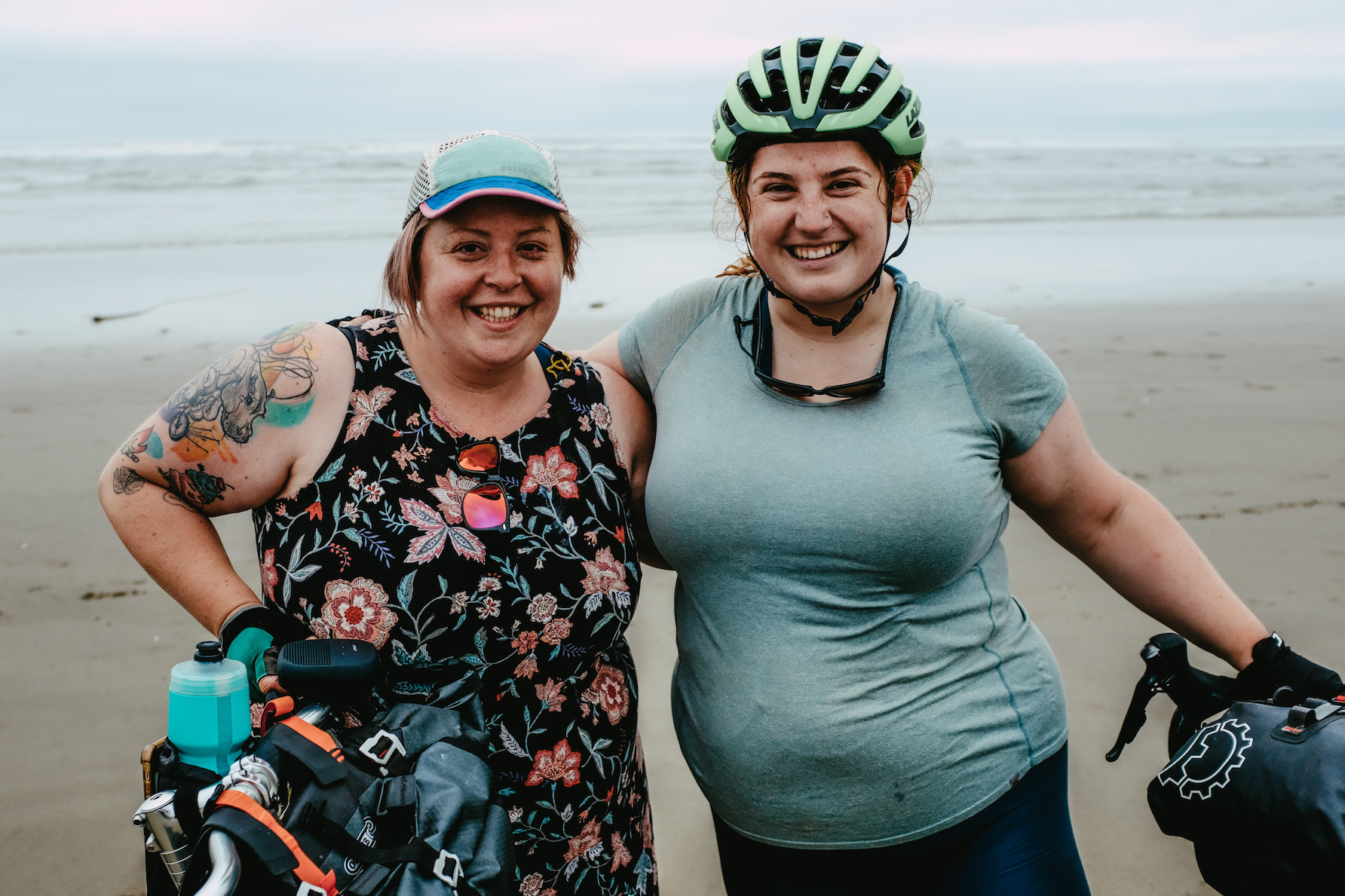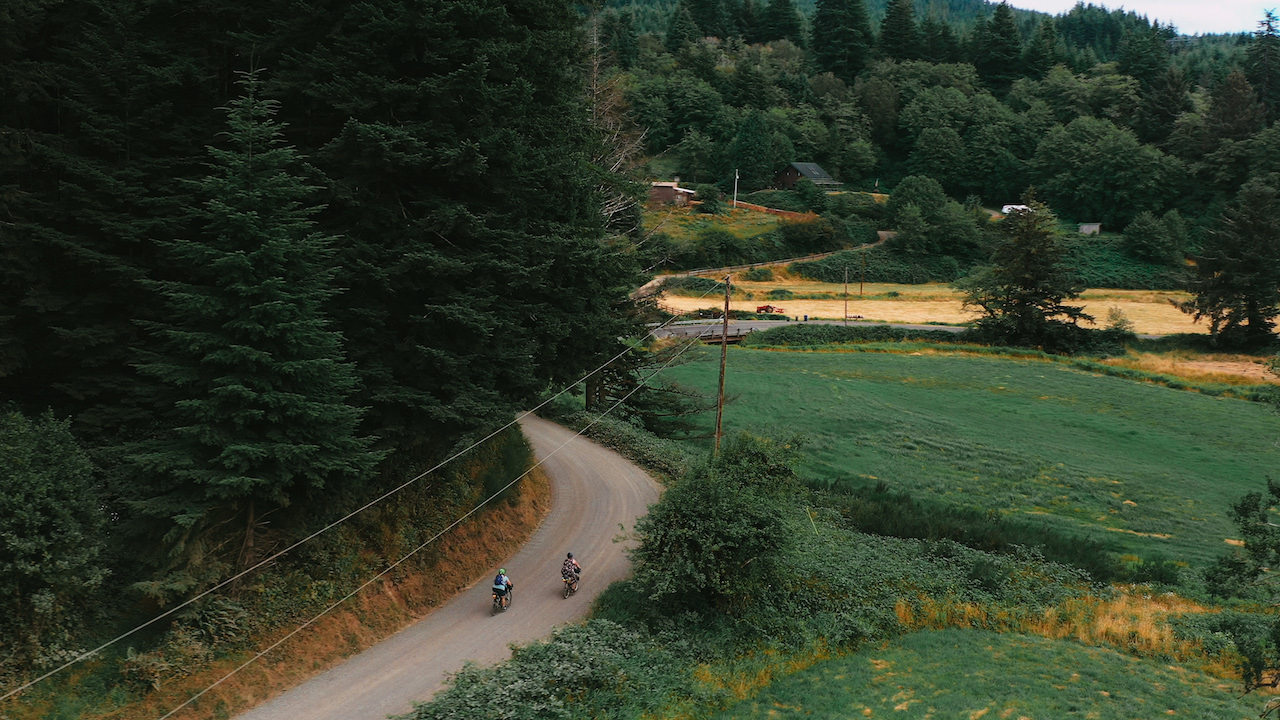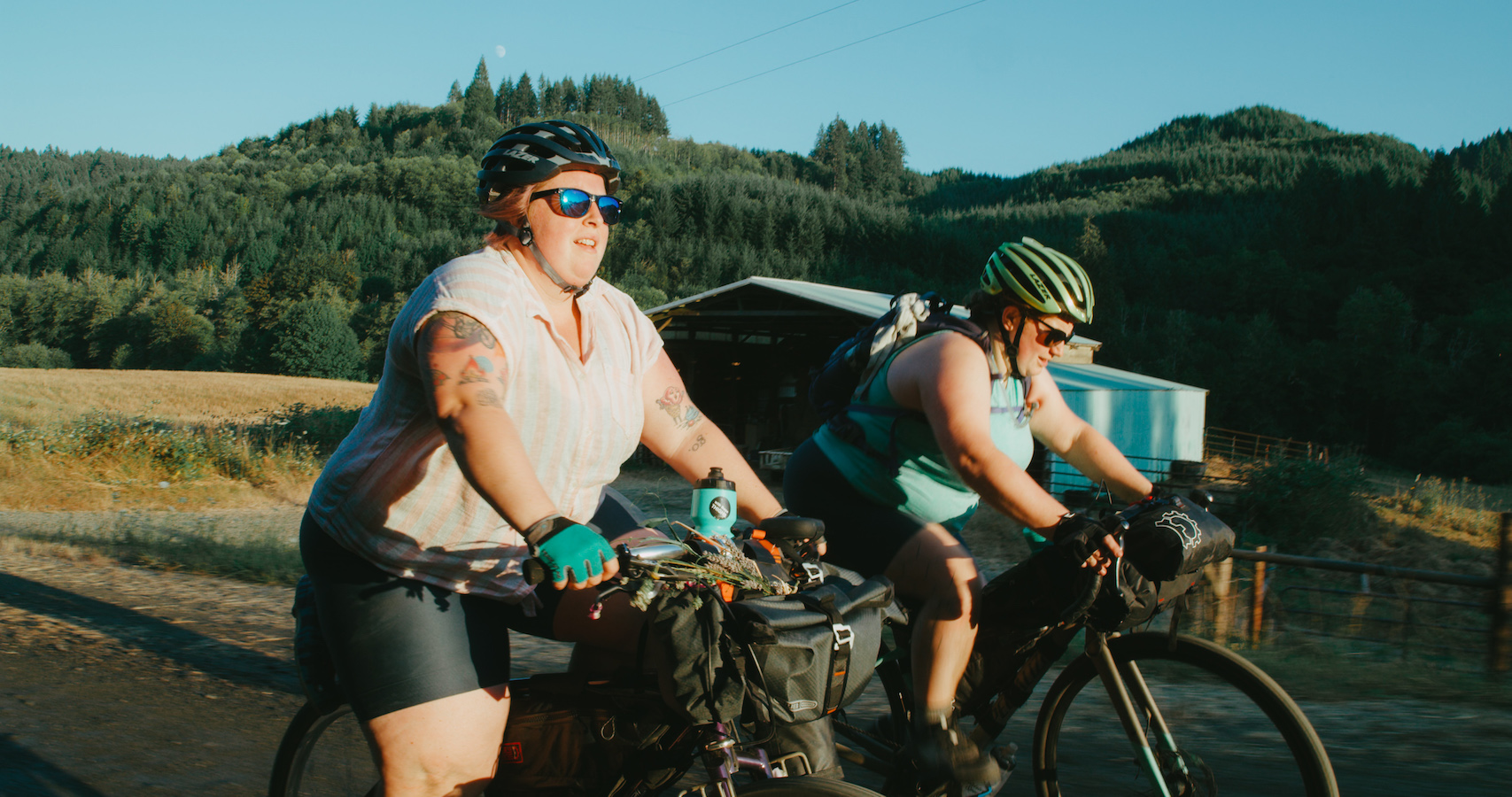‘All Bodies on Bikes’: These two cyclists are advancing the conversation about size inclusion in cycling
The new Shimano Originals film follows Kailey Kornhauser and Marley Blonsky as they bikepack through the Oregon Coast Range and discuss creating a more welcoming and diverse cycling community
 Photo by:
Shimano
Photo by:
Shimano
In cycling, many see bodies (and their weight), as part of a physics problem—an equation that can quickly become problematic. The idealization of the GC body has led to a culture that not only glorifies unhealthily eating habits (Pantani eating only watermelon after a six hour ride) but also leaves no space for those who don’t fit into the rigid physical archetype of “cyclist.”
All Bodies on Bikes, a new Shimano Originals film follows Kailey Kornhauser and Marley Blonsky, two cyclists on a mission to change the perception of who rides bikes.
In the film, the riders, who both self-identify as fat, take on a two-day bikepacking trip through the Oregon Coast Range on the Corvallis to Coast Trail. They discuss their desire to build a more welcoming and diverse cycling community, their experiences growing up as a person in a larger body, and their love for a more welcoming and diverse cycling community that is slowly blossoming.
“Nobody was talking about size inclusion or what it’s like to be a fat person who rides bikes,” says Blonsky. “We realized we could contribute to this and we could make a difference. We want people to feel empowered that they can ride a bike wherever they want to go.” Kornhauser and Blonsky write, consult, and present workshops on body size inclusion in the cycling community, we spoke to them about the film and some of the topics it touches on.

[This interview has been edited for length and clarity]
Canadian Cycling Magazine: One of my favourite quotes from the film was near the beginning, when you said: “To be a cyclist, you just have to be a person riding a bike—being fast is not what makes you an experienced rider.” Quite often there’s divide between what we perceive as a “casual” cyclists versus a “serious” kitted up and clipped-in road cyclists. Do you think that needs to evolve?
Kailey Kornhauser: I think there are going to always be folks that clip into their bike and ride in spandex and, sometimes, I’m one of those people. But, I think culturally there needs to be a shift to accepting slower riders or folks that aren’t on the most fancy or newest bike, or aren’t on the right type of bike for the type of riding (whatever that even means these days). Our perception shouldn’t immediately be that those people are new cyclists, or that is they’re not really what real cyclists just because they’re doing it differently. Marley’s been saying this quote I really like…
Marley Blonsky: All bikes are good bikes and all rides should be celebrated?
KK: That one, yeah! Really, if you’re on a bike, you’re a bike rider, you know? [We’re] just trying to break down those barriers while still allowing us to celebrate the uniqueness of each type of bike riding.
MB: Also just expanding the picture of who is a cyclist—whether that’s an older person who’s using an ebike, or a person on adaptive cycle or a fat person. Like Kailey said, going fast doesn’t necessarily make you a cyclist. It’s just being on a bike.

CCM: Within the cycling media, historically the imagery is generally one standardized body type. Do you think you’ve started to see a change in that?
KK: I think the fact that Shimano has taken this film project on, that speaks volumes to the industry trying to change this narrative of who they’re displaying as “the cyclist”. Obviously there’s a ton of room to grow, but we’ve been really impressed by the response from the bike industry on how willing they are to have these conversations. Recognizing that it takes time to change marketing materials and the messaging around brands, they’re doing that work—not just for people in larger bodies, but for racial diversity, age diversity.
MB: I think it’s long overdue. Companies are finally starting to realize that there’s money to be made in this other very large segment of the population that is not skinny, and not out there to maybe race or to ride a century—they maybe just want to go on a bike trail with their family or ride recreationally.
I’m not usually a patient person, but, with this, I think it’s important that we do it the right way—that we don’t tokenize people, and that we make equipment that works that’s safe for folks and that lasts a long time.
CCM: So, within the industry that change is slowly happening, but within cycling clubs, within cycling communities, what do you think are still some areas that need to change to make those environments more welcoming?
MB: I personally don’t spend a lot of time within those spaces, because they’re not fun for me and I don’t often feel included. So I’ve been very intentional about finding spaces that are welcoming. For me, that was the WTF bike explorers (which has just rebranded to Radical Adventure Riders). Smaller groups like that are popping up to make space that is comfortable for marginalized groups, whether that’s fat people or different gender identities. I have no interest in going to ride with folks who don’t want me there, or who aren’t going to accept me for who I am. And to me, that’s their loss. Like, I’m funny, I’m fun to ride with, you could draft off of me down a hill and we’ll go really fast!
CCM: There’s a lot of taboo around talking about weight—it can really make people uncomfortable and it’s not often talked about. What can cycling do to get this more out there as a topic and start a conversation?
KK: We start our our workshops and our work around this by saying that “Everybody has a body, and everyone in this space rides a bike with that body. We all have positive and negative relationships with aspects of our body—there are times that we really love what our body does and times that we’re not such a big fan of what our body’s doing.”
Making it this universal thing destigmatizes it for folks, especially those in larger bodies that have had to deal with a lot of structural barriers due to their weight, but also for people that are in smaller bodies. We know this is an issue that everybody is dealing with.
I think Marley and I are abnormally comfortable talking about our body size, but we’ve gotten there by being in communities that talk about body size and weight, not in a negative or stigmatized way, but just in a matter of fact way. I hope that by talking about it, we’re making it more comfortable for other people to talk about it and get to a space where they can have open conversations. We’re not recommending anyone go out and start calling people fat just because we call ourselves fat—that word is still so charged for many people. And talking about weight is so sensitive. We try to help folks figure that out in our workshops, but definitely, we’re still learning.
MB: The other thing too, is asking folks to celebrate their bodies for what it can do and not its downfalls. If you’re worried about your weight climbing a hill, think about how go fast you can go down that hill. That’s an example I love.
I would also say like, hire us to do your talks. We bring up these conversations and allow a safe space to engage in this area where, like you said, it’s not being talked about. And a lot of folks don’t even realize how pervasive this is within our our bike world. I can’t even tell you how many advertisements I get on my Instagram about losing weight and bicycling. There’s so many other reasons to ride your bike than to lose weight—riding bikes for joy, or for transportation or utility or to carry your kids around.
CCM: Was there anything notable on this ride that didn’t make the cut in the film?
KK: There was lots of dancing. I think maybe there’s a little bit at the end, there was a lot more than what’s shown. There were also some struggles that just didn’t make the cut, you know, in this story that we’re telling, but it’s worth talking about. Even though we approached it with joy, and we could we come to biking to have fun, there are moments that aren’t fun and are challenging. For me bikepacking is a way to see how far I can push myself. And so sometimes that’s really fun. Looking back, it’s certainly fun. But in the moment, there can be tears, there can be struggles, walking your bike up a hill, moments when you feel really hot and tired. And you’re like, “Why the heck am I out here?”
I think the overall experience of riding a bike should be fun. But I also think it’s worth noting like, it’s not going to be fun 100 per cent of the time. It’s about the experience being approached with joy.
MB: I allude to this a little bit in early parts where we’re talking about the mileage and the elevation gain, but Kailey planned this route and, as she just said, she likes to push herself on backpacking trips. I didn’t know that before this trip—I like to relax and swim and see things and go slow. We learned on this trip that we have very, very different bike packing styles.
It was probably one of the hardest bikepacking trips I’ve ever been on. And I feel like the only time the camera crew was with us, I was walking because they didn’t get to go down any of like the singletrack with us or any of the awesome descents.

But it was a really cool experience, especially because Kailey I just hadn’t done this before. So I really want to take her on a trip that I plan, where I can say, “That was your style. Now this is my style.”
KK: Marley and I, we talked about the fact that not all people in larger bodies are the same, but then experiencing that for ourselves was totally different. Realizing that we are two unique bike riders that approached biking differently. We have so much in common and share so many experiences, but there are differences just like there’s differences amongst any of us.
This was my first time riding with another person in a larger body on a backpacking trip. It was amazing, I got to ride with someone all day long, rather than being left behind—I’m often the last one in the group so I’m spending a lot of time alone.
Like Marley said, we’re going on a different style ride next time and we’re just gonna keep riding together and learning.
CCM: Any tips for someone who identifies as fat who wants to get into cycling?
KK: A lot of the questions we get are about equipment. Bikes often have weight limits, so figuring out which bikes and wheels are going to accommodate your body is really key—making sure everything’s safe and ready to go. That’s gonna make it way more fun when you get out there, not dealing with broken equipment.
We try to recommend to find a shop that you really love, and where you can talk about these things with the folks that work there. Supporting a local bike shop that you really care about, and then finding the community that you want to ride with, I think that is really what makes it fun. I think that’s why I love to ride, and why I gravitate towards certain types of riding that allow me to spend time with my friends outside. Find people that you’re going to have a fun time doing it with.
MB: There are a lot of Internet communities that are really supportive in this space, everyone that I’ve talked to within this sphere is incredibly supportive. I mean, I probably get five or six messages a day on Instagram like, “Hey, can you help me with this?” Or: “Can you recommend this?” My vision and my dream is fat people on bicycles, so we’re here to support you.
Kailey and I are going to start offering digital classes to talk through those questions—offering classes directly to our fat community on how to shop for a bike, how to have those conversations, what brands are going to work for you. We’ll be posting details about that on Instagram and on our websites coming up.



